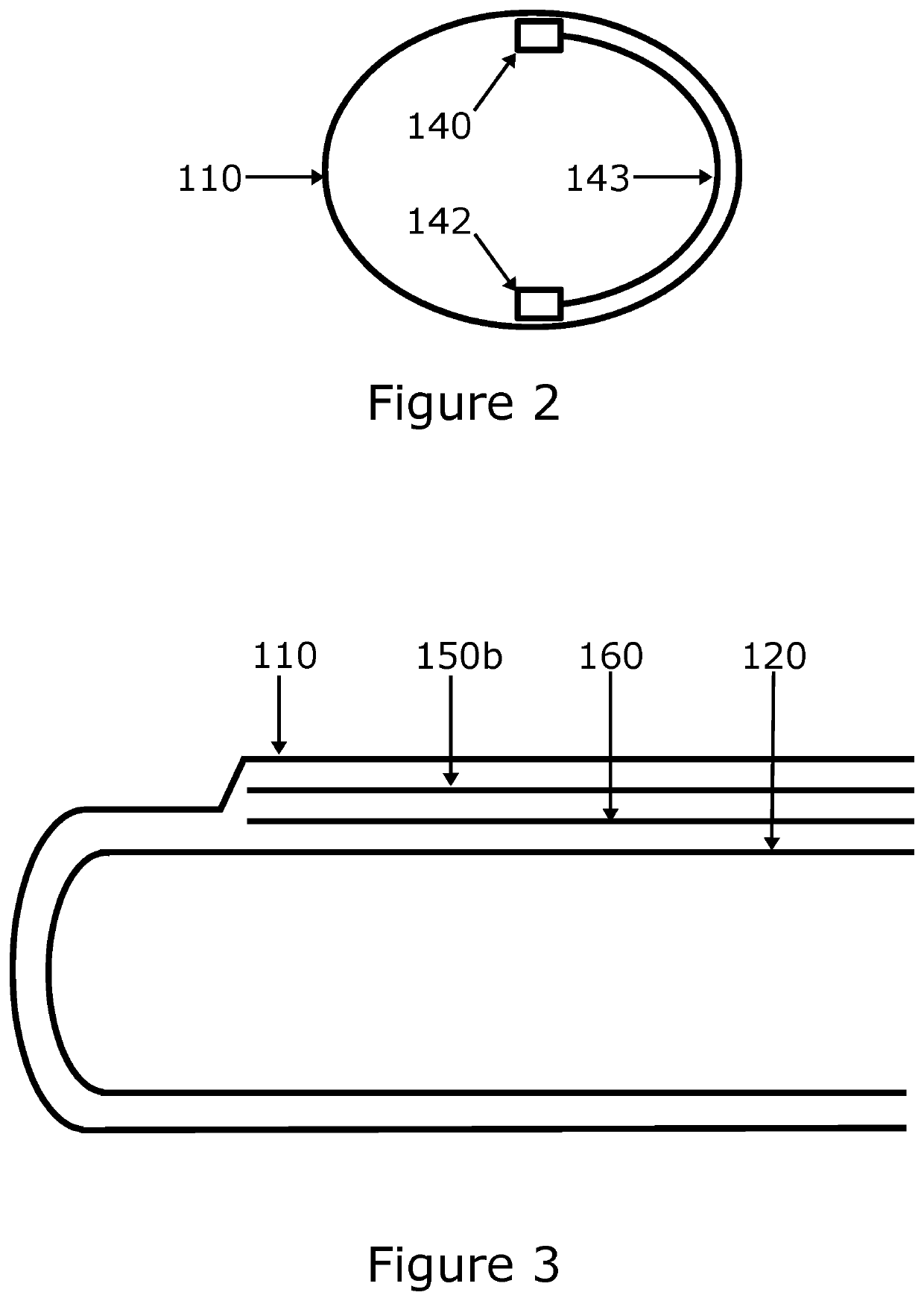Glove with integrated voltage detector
a technology of voltage detector and glove, which is applied in the direction of voltage measurement only, protective garments, instruments, etc., can solve the problems of inconvenience, inconvenient hand-held detectors available, and ac poses risks to workers in those environments, and achieves the effect of not adversely affecting the performance of gloves
- Summary
- Abstract
- Description
- Claims
- Application Information
AI Technical Summary
Benefits of technology
Problems solved by technology
Method used
Image
Examples
first embodiment
[0019]In a first embodiment of the inventive glove, glove 100 comprises outer layer 110, inner layer 120, circuit board 130, ground buttons 140 and 141 (connected via wires 142 and 143), a plurality of monopole aerials 150a, 150b, 150c, 150d, and 150e (collectively aerials 150), and dielectric layer 160. FIGS. 1, 2, and 3 show various views of glove 100.
[0020]Each of aerials 150 comprise about 3 meters of 40 gauge polyurethane-insulated copper Litz wire, with the bulk of the wire arranged in a coil lying flat on the top side of each finger of the glove, with a short, generally straight, wire segment extending towards and connects to circuit board 130. The coiled portion is about 18 mm wide, and the total length of the coiled segment plus the straight segment of aerials 150b, 150c, 150d, and 150e is about 100 mm; the total length of the coiled segment and the straight segment of aerial 150a (the thumb) is about 70 mm. When worn, the flattened coils will bend slightly to fit the shape...
PUM
 Login to View More
Login to View More Abstract
Description
Claims
Application Information
 Login to View More
Login to View More - R&D
- Intellectual Property
- Life Sciences
- Materials
- Tech Scout
- Unparalleled Data Quality
- Higher Quality Content
- 60% Fewer Hallucinations
Browse by: Latest US Patents, China's latest patents, Technical Efficacy Thesaurus, Application Domain, Technology Topic, Popular Technical Reports.
© 2025 PatSnap. All rights reserved.Legal|Privacy policy|Modern Slavery Act Transparency Statement|Sitemap|About US| Contact US: help@patsnap.com



